Blog
The Complete Guide to Satellite Surveillance Cameras: 2025 Ultimate Buyer’s Guide

The Complete Guide to Satellite Surveillance Cameras in 2025
🛰️ Secure remote locations anywhere on Earth with cutting-edge satellite surveillance technology. Your ultimate buyer’s guide to making the right choice.
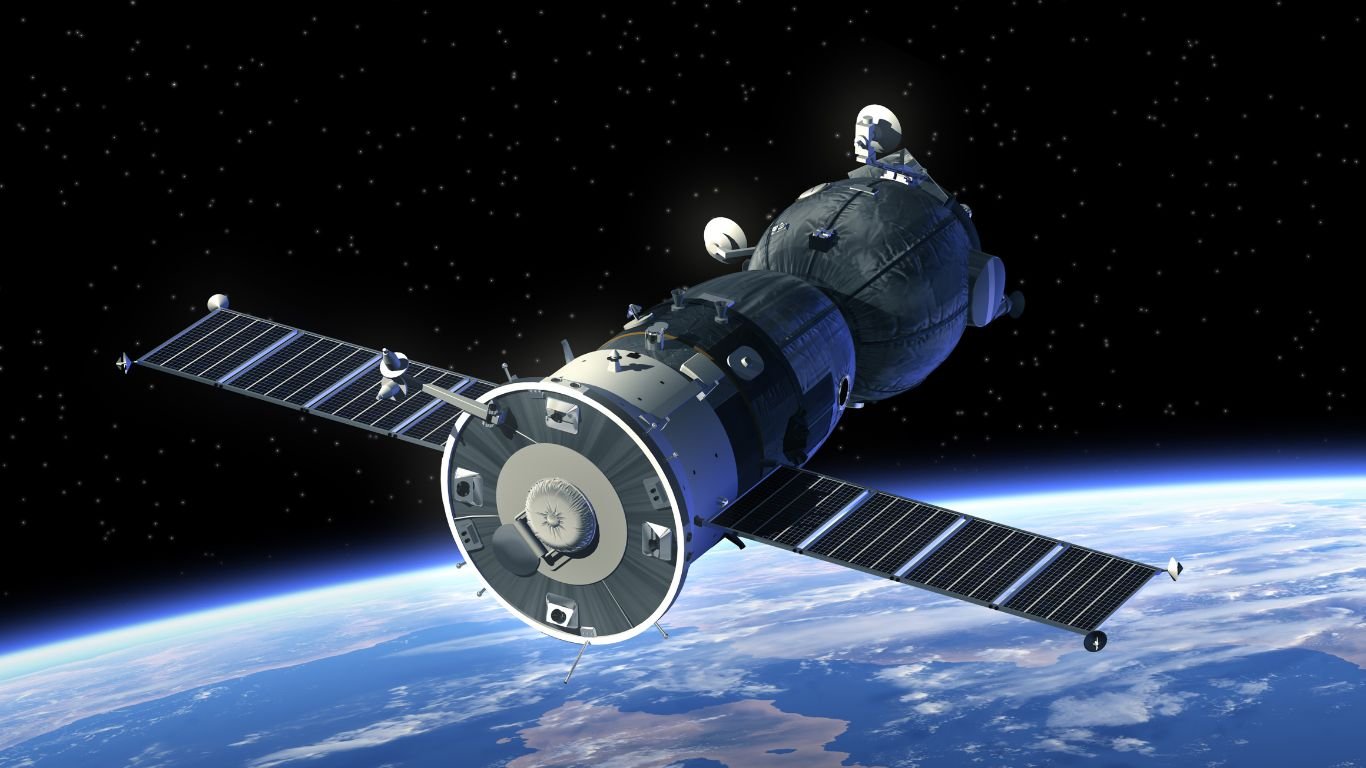
From isolated construction sites to off-grid cabins, discover how satellite surveillance cameras provide 24/7 security where traditional systems fail.
What Are Satellite Surveillance Cameras?
Satellite surveillance cameras represent the pinnacle of remote monitoring technology, enabling 24/7 security coverage in locations where traditional WiFi or cellular networks simply don’t reach. These sophisticated systems leverage satellite communications to transmit high-definition video and data from virtually anywhere on Earth.
Unlike conventional security cameras for remote locations, satellite-enabled systems don’t depend on local internet infrastructure. They create a direct communication link with orbiting satellites, making them ideal for construction sites, mining operations, oil rigs, remote cabins, and other off-grid locations that require reliable surveillance.
💡 Key Insight:
The global satellite surveillance market is projected to reach $8.9 billion by 2027, driven by increasing demand for remote location security.

Professional satellite surveillance system in action at a remote monitoring site
Why Satellite Surveillance Matters in 2025
Global Coverage
Monitor assets in the most remote corners of the planet
Infrastructure Independence
No dependence on local networks or power grids
24/7 Reliability
Continuous monitoring regardless of weather or terrain
Rapid Deployment
Setup surveillance in hours, not weeks
How Satellite Surveillance Cameras Work
Understanding how satellite surveillance cameras operate is crucial for making informed purchasing decisions. These systems combine ground-based camera hardware with sophisticated satellite communication technology to create a seamless monitoring solution.
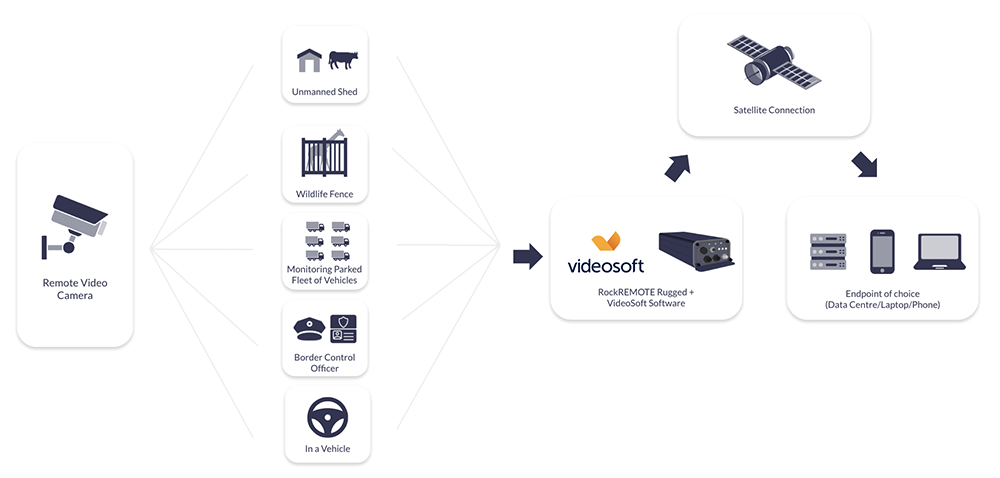
Complete workflow of a professional satellite surveillance system
Core Components & Technology
Camera & Imaging Systems
- High-sensitivity sensors: Optimized for low-light and extreme weather conditions
- 4K/8K resolution: Crystal-clear detail for identification and evidence
- Weatherproof housing: IP67/IP68 rated for harsh environments
- Pan/tilt/zoom: Remote-controlled positioning and zoom capabilities
Satellite Communication
- Iridium network: Global coverage with 99.9% uptime reliability
- Globalstar support: Cost-effective regional coverage options
- VSAT integration: High-bandwidth solutions for multiple cameras
- Automatic failover: Seamless switching between networks
Edge Computing & AI
- Local processing: Reduces bandwidth usage by up to 90%
- Motion detection: Smart alerts only when activity is detected
- Object recognition: Distinguish between humans, vehicles, and wildlife
- Video compression: Advanced codecs for efficient transmission
Power & Storage
- Solar integration: Self-sustaining power for extended deployments
- Battery backup: 72+ hours operation during outages
- Local storage: 1TB+ onboard recording for redundancy
- Cloud backup: Automatic off-site storage of critical footage
How It All Works Together
Capture
Camera records high-definition video
Process
AI analyzes and compresses footage
Transmit
Data sent via satellite uplink
Monitor
Real-time viewing on any device
Expert Review: Best Security Cameras 2025
Watch LifeHackster’s comprehensive review of the best security cameras for 2025, including satellite-enabled solutions for remote locations.
Satellite vs Cellular vs WiFi Security Cameras: Complete Comparison
Choosing between a satellite security camera, cellular system, or traditional WiFi setup depends on your specific location and requirements. This comprehensive comparison helps you understand which technology best fits your remote monitoring needs.
| Feature | 🛰️ Satellite | 📱 Cellular/4G LTE | 📶 WiFi |
|---|---|---|---|
| Coverage Area | Global | Regional | Local Only |
| Remote Location Support | ✅ Excellent | ⚠️ Limited | ❌ Poor |
| Setup Complexity | Moderate | Easy | Easy |
| Monthly Data Costs | $150-500+ | $20-100 | $0-50 |
| Weather Reliability | ✅ Excellent | ⚠️ Good | ⚠️ Fair |
| Power Requirements | High (Solar Compatible) | Moderate | Low |
| Video Quality | 4K (Bandwidth Limited) | 1080p-4K | Up to 8K |
| Best Use Cases | Remote sites, offshore | Rural areas, construction | Urban, suburban |
🛰️ Choose Satellite When:
- Location has zero cellular coverage
- Monitoring offshore or arctic locations
- Maximum reliability is required
- Budget allows for premium solutions
📱 Choose Cellular When:
- Weak but present cellular signal
- Need balance of cost and coverage
- Rural construction or agricultural sites
- Quick deployment is priority
📶 Choose WiFi When:
- Reliable internet is available
- Cost minimization is critical
- High-resolution video is needed
- Urban or suburban locations
Satellite Surveillance Camera Costs & ROI Analysis 2025
Understanding the total cost of ownership for satellite home security systems is crucial for making informed decisions. While initial costs are higher than traditional systems, the ROI becomes compelling when you factor in theft prevention, insurance savings, and operational efficiency.
Cost Breakdown Analysis
3-Year ROI Comparison
💰 Initial Investment
📅 Monthly Operating Costs
📈 Potential Savings
Interactive Cost Calculator
Your Estimated Costs:
Installation & Setup Guide for Satellite Surveillance Cameras
Installing security cameras for remote locations requires careful planning and professional expertise. This comprehensive guide covers everything from site assessment to system activation.
Pre-Installation Checklist
Installation Timeline
Day 1: Foundation & Mounting
Install camera mounts, satellite dish, and power infrastructure
Day 2: Equipment Setup
Configure cameras, satellite modem, and edge computing unit
Day 3: Network Configuration
Establish satellite connection and test all communication links
Day 4: Testing & Optimization
Full system testing, calibration, and performance optimization
System Activation
Go-live with 24/7 monitoring and remote access setup
Critical Installation Considerations
🌍 Site Requirements:
- • Clear southern sky view (Northern Hemisphere)
- • Stable mounting surface or foundation
- • Protection from extreme weather
- • Accessible for maintenance
⚡ Power Planning:
- • Calculate total power consumption
- • Size solar panels for worst-case scenarios
- • Include 72+ hour battery backup
- • Plan for seasonal variations
🔧 DIY vs Professional
- • Basic 1-2 camera systems
- • Simple terrain
- • Technical experience required
- • Multi-camera installations
- • Complex power systems
- • Mission-critical applications
📋 Required Tools
- Satellite signal meter
- Network cable tester
- Power tools for mounting
- Weatherproof connectors
- Multimeter for electrical testing
⚠️ Common Mistakes
- Poor satellite dish alignment
- Inadequate power planning
- Ignoring weather protection
- Skipping cable management
- Insufficient testing before go-live
Top Satellite Surveillance Camera Systems 2025
Based on extensive testing and analysis, these are the best satellite camera for home and commercial use. Each system offers unique advantages for different applications and budgets.
RadiusVision Satellite Security System
Professional-grade system designed for the harshest environments. Features 4K cameras, advanced AI processing, and guaranteed 99.9% uptime with global Iridium coverage.
✅ Pros:
- • Proven enterprise reliability
- • 24/7 professional monitoring
- • Global coverage guarantee
- • Military-grade hardening
❌ Cons:
- • High initial investment
- • Professional installation required
- • Ongoing service costs
- • Overkill for small operations
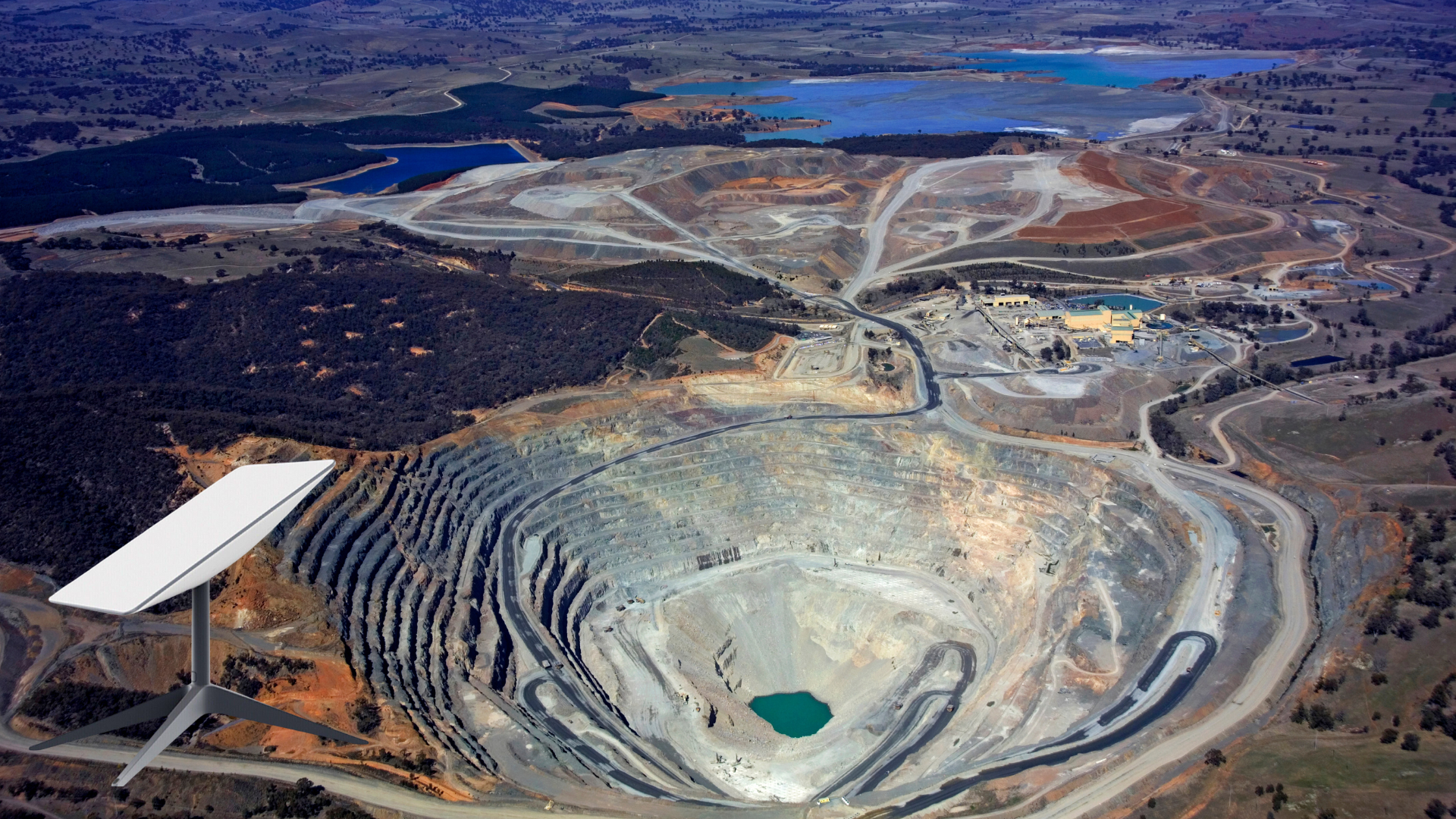
Ground Control RockREMOTE + Videosoft
Advanced edge computing platform with best-in-class video compression. Features intelligent bandwidth management and Total Recall technology for enhanced image analysis.
✅ Pros:
- • Superior video compression
- • Edge AI processing
- • Multiple connectivity options
- • Rugged IP67 design
❌ Cons:
- • Complex configuration
- • Higher technical requirements
- • Limited consumer support
- • Specialized training needed
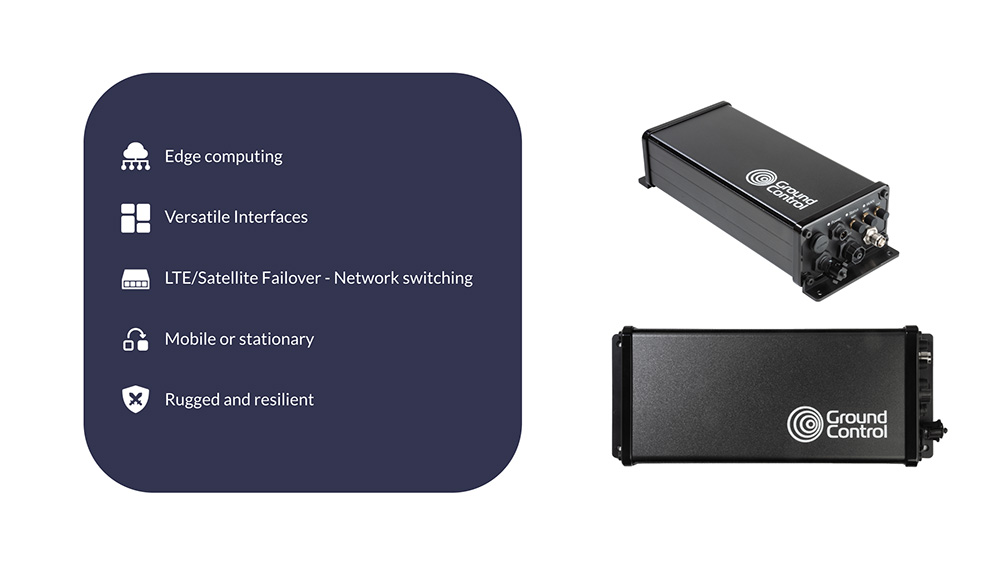
Reolink Argus 4 Pro (Satellite-Ready)
High-quality 4K camera that can be paired with satellite communication modules for remote home monitoring. Features dual-band Wi-Fi 6, ColorX night vision, and extended battery life.
✅ Pros:
- • 4K Ultra HD resolution
- • 180° field of view
- • Solar panel compatible
- • Easy DIY installation
❌ Cons:
- • Requires additional satellite modem
- • Limited professional features
- • Not weatherproof as enterprise options
- • Consumer-grade durability
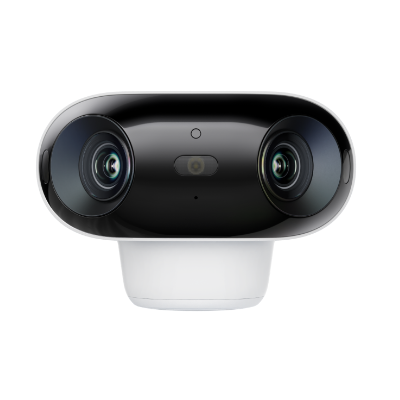
VOSKER V300 Cellular/Satellite System
Specialized for wildlife monitoring and remote surveillance with exceptional 6-9 month battery life. Features cellular/satellite hybrid connectivity and weather-resistant design.
✅ Pros:
- • Exceptional battery life
- • Dual connectivity options
- • Wildlife-specific features
- • Affordable pricing
❌ Cons:
- • Limited satellite functionality
- • Basic video quality
- • Niche application focus
- • Limited enterprise features

Quick Comparison Matrix
| System | Price Range | Best For | Coverage | Installation | Rating |
|---|---|---|---|---|---|
| RadiusVision | $15K-45K | Enterprise | Global | Professional | ⭐⭐⭐⭐⭐ |
| Ground Control | $8K-25K | Advanced Users | Global | Professional | ⭐⭐⭐⭐⭐ |
| Reolink Argus 4 Pro | $1.2K-3.5K | Home/Small Business | Regional | DIY | ⭐⭐⭐⭐⭐ |
| VOSKER V300 | $800-2.2K | Wildlife/Mobile | Limited | DIY | ⭐⭐⭐⭐☆ |
Frequently Asked Questions About Satellite Surveillance Cameras
Satellite surveillance cameras use direct satellite communication links instead of traditional internet connections. They establish a two-way data connection with orbiting satellites (like Iridium or Globalstar networks) to transmit video, receive commands, and provide real-time monitoring. The system includes a satellite modem, antenna, and specialized communication protocols that work independently of terrestrial internet infrastructure.
Monthly satellite data costs vary significantly based on usage and network provider. Basic plans start around $150/month for limited data (suitable for motion-activated systems), while comprehensive monitoring can cost $300-800/month for continuous streaming. Enterprise solutions with multiple cameras and high-bandwidth requirements can exceed $1,000/month. These costs include satellite airtime, data transmission, and often include monitoring services.
Simple satellite camera for home systems can be DIY-installed if you have technical experience with networking and satellite alignment. However, most professional systems require expert installation due to precise satellite dish alignment, complex power systems, and network configuration. DIY installation is realistic for single-camera systems in accessible locations, while multi-camera or mission-critical installations should use professional installers to ensure optimal performance and reliability.
Power requirements depend on system complexity but typically range from 50-200 watts continuous operation. A basic single-camera system needs about 50-75W, while multi-camera systems with satellite communication can require 150-300W. Most installations use solar panels (300-800W capacity) with battery backup systems (200-400Ah) to ensure 72+ hours of operation during outages. Power planning must account for seasonal variations and worst-case weather scenarios.
Modern satellite networks like Iridium offer 99.9% uptime reliability, making them extremely dependable for security cameras for remote locations. However, performance can be affected by severe weather (heavy snow/rain), physical obstructions, or satellite orbital positioning. Most professional systems include redundant connectivity options and local storage to maintain security coverage during temporary outages. The reliability is typically higher than cellular networks in remote areas.
Video quality depends on bandwidth allocation and compression technology. Most systems deliver 1080p HD quality for live streaming, with higher resolutions (up to 4K) stored locally and transmitted on-demand. Advanced systems use smart compression to optimize bandwidth – sending lower quality for routine monitoring and full resolution when motion is detected. Professional systems achieve excellent image quality while managing satellite bandwidth costs through intelligent video processing and edge computing.
Legal requirements vary by jurisdiction but generally follow standard surveillance camera laws. Key considerations include privacy compliance, data storage regulations, cross-border data transmission (for satellite networks), and local permits for installations. Some areas require notification signs for surveillance systems. For commercial installations, ensure compliance with workplace monitoring laws and industry-specific regulations. International projects may need additional permits for satellite communication equipment.
Professional satellite home security systems typically last 7-12 years with proper maintenance. Camera components may need replacement every 5-8 years, while satellite communication equipment can operate for 10-15 years. Battery systems require replacement every 3-5 years depending on usage and environmental conditions. Solar panels generally last 20-25 years. Regular maintenance, firmware updates, and component monitoring help maximize system lifespan and ensure consistent performance throughout the operational period.
About Our Security Camera Expertise
This comprehensive guide is brought to you by CCTVCAM, a leading high-tech enterprise specializing in video security solutions since 2011. With over 13 years of industry experience, we’ve helped secure locations across 190+ countries worldwide.
Why Trust This Guide?
- Extensive hands-on testing of satellite surveillance systems
- Direct partnerships with leading satellite communication providers
- Real-world deployment experience in harsh environments
- Continuous monitoring of industry trends and technology advances
Secure Your Remote Assets Today
Satellite surveillance cameras represent the future of remote security monitoring. Whether you’re protecting a construction site, monitoring wildlife, or securing an off-grid property, the right system can provide peace of mind and substantial ROI.
🏠 Homeowners
Start with the Reolink Argus 4 Pro plus satellite connectivity module for reliable off-grid home monitoring.
🏗️ Businesses
Consider Ground Control’s RockREMOTE system for advanced features and reliable commercial-grade performance.
🏢 Enterprise
RadiusVision offers the most comprehensive solution with guaranteed uptime and professional monitoring services.
Key Takeaways
- Satellite systems excel where cellular and WiFi fail
- Initial costs are high but ROI is compelling
- Professional installation recommended for best results
- Solar power integration essential for remote locations
- Choose systems based on specific use case requirements
- Plan for ongoing data and monitoring costs
